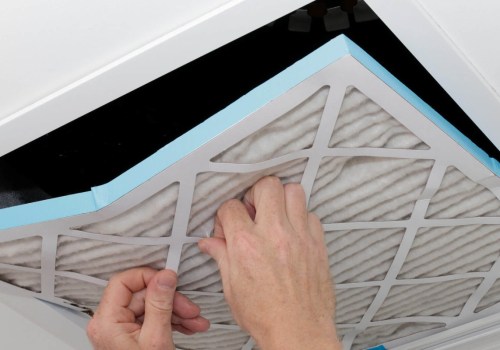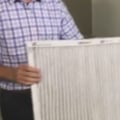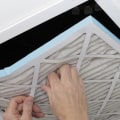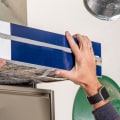Airborne asbestos fibers are solid particles ranging in size from 0.7 to 90 microns, and HEPA air filters are designed to capture particles above and below 0.3 microns. This means that these devices are more than capable of removing asbestos from the air. Asbestos air filters in your ventilation, oven and HVAC system work by trapping and absorbing passing particles. Asbestos fibers are microscopic and can float invisible to the naked eye, so your home will need air filters capable of preventing particles as small as 3 microns from passing through to keep your air system safe.
HEPA filters generally consist of a fiberglass mat that traps particles that flow around it, while allowing clean air to pass through. They are specially designed to absorb tiny microscopic particles, such as asbestos fibers, and ultimately purify the air. In fact, this is their primary use in buildings, especially in old houses that had been built before asbestos regulations came into force. However, using a HEPA filter once will not guarantee an asbestos-free environment.
A number of uses are required to remove all asbestos particles that might have been missed the first time. Regular use of HEPA air purifiers is recommended for optimal air quality. Only an air purifier with a True HEPA filter will eliminate asbestos. On average, asbestos fibers and particles range from 0.7 to 90 microns, which fits the HEPA filter criteria as it can capture particles as small as 0.3 microns with an efficiency of 99.97%.
If the air cleaner uses a lower HEPA-type filter, it would still trap most of the fibers. Regardless of the type of HEPA filter, the air purifier must have an airflow outlet to cover the entire room. Otherwise, there wouldn't be enough airflow force to pull down the very light fibers. If there is a continuous flow of air, such as a fan or an air conditioner, the asbestos fibers will remain afloat indefinitely unless there is an air cleaner that lowers them. HEPA air purifiers are designed to filter a wide range of small particles, as well as smoke and dust mites. Because asbestos dust has tiny dimensions, HEPA filters prove to be very effective in preventing them from polluting the air inside a room.
This technology is capable of filtering 99.97% of contaminants in the air that are as small as 0.3 microns in size. Air filters can't pick up and choose what particles they extract from the passing airflow, but asbestos air filters are efficient enough to be able to block a wide range of particles in the air that they try to float. Another important thing to note regarding HEPA filters is that a filter is designed to clean only one space at a time. Some of the most common types of air filters are ultraviolet purifiers, activated carbon air purifiers, ionic air purifiers, and HEPA filters. Therefore, if you don't want to compromise on air quality, the Aeris 3-in-1 Pro air purifier is a good choice. However, there are special asbestos air filters that can be effective, often under the supervision of a trained professional. The air filter fabric is located in the Minimum Efficiency Report Value (MERV) system; the tightest fabrics occupy a higher MERV rating than those with looser fabrics.
Like all products, these air filters vary in quality and effectiveness depending on both the quality of the product and the degree of proper use. In addition to getting the right size air purifier, it's also important to remember that air purifiers are limited to treating the air in the room they're stationed in.










